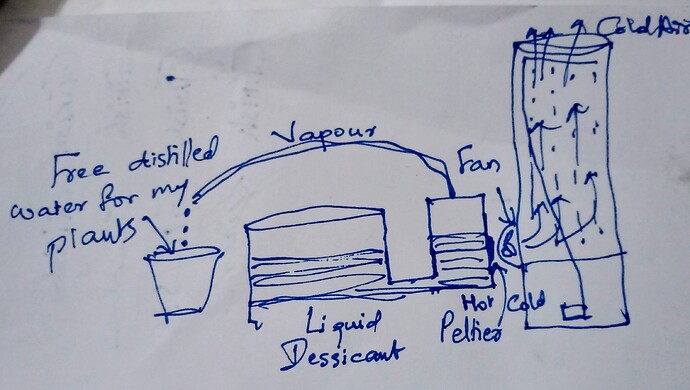Making a thread to list projects I have in mind, so that I don’t spam my own other thread with irrelevant ideas. Some of these I am already doing. Some need to be done. Some are on my “one day” list.
Fan that operates when sunlight hits the area. Described here. https://stemgames.metastudio.org/t/cooling-plant-roots-when-sunlight-hits-balcony/813
Also from that thread:
And
Growing ultra-highland nepenthes in lowland conditions
I grow carnivorous plants already, this challenge is more about growing plants with specific climate requirements outside that climate and ideally acclimatizing them reliably and even breeding from them. Ultrahighland nepenthes grow in climates where daytime temperatures are around 20C-24C and nights are under 10C usually and 15C at warmest.
Solar cooling using a dessicant wheel
There are videos about this on youtube. But they are mostly for big units. Same with ready dessicant wheels available online. I am hoping to create something smaller that can be used by anyone.
Zeer pot marries mitti-cool fridge and has a plant cooler baby…
A zeer pot is a simple gadget made of two earthen pots that fit inside each other with a gap of a few inches, that is filled with sand and watered. Evaporative cooling drops the temperature of contents of inner pot by 10-20 degrees apparently. A mitti cool fridge also relies on evaporative cooling. A tank on the top of the fridge is basically a “matka” from which, water also drips down the sides of the fridge - the whole fridge is made of baked clay like a matka.
I want to use these ideas in some way/combination that I can cool my pots.
-
Two pots with drain holes aligned and sealed so that the water from inner pot can flow right out and not get into the outer pot - this can be used for growing plants that need cool roots - notably the notorious drosera regia. This should be simple. Sand, some M-seal, two earthen plant pots with a few inches difference in size.
-
The peltier cooler can be attached to a double square pot cooler to maximize evaporative cooling and increase the effectiveness of the Peltier module.
There are lots of ideas, but kid calls, gotta run. Will add more here.
